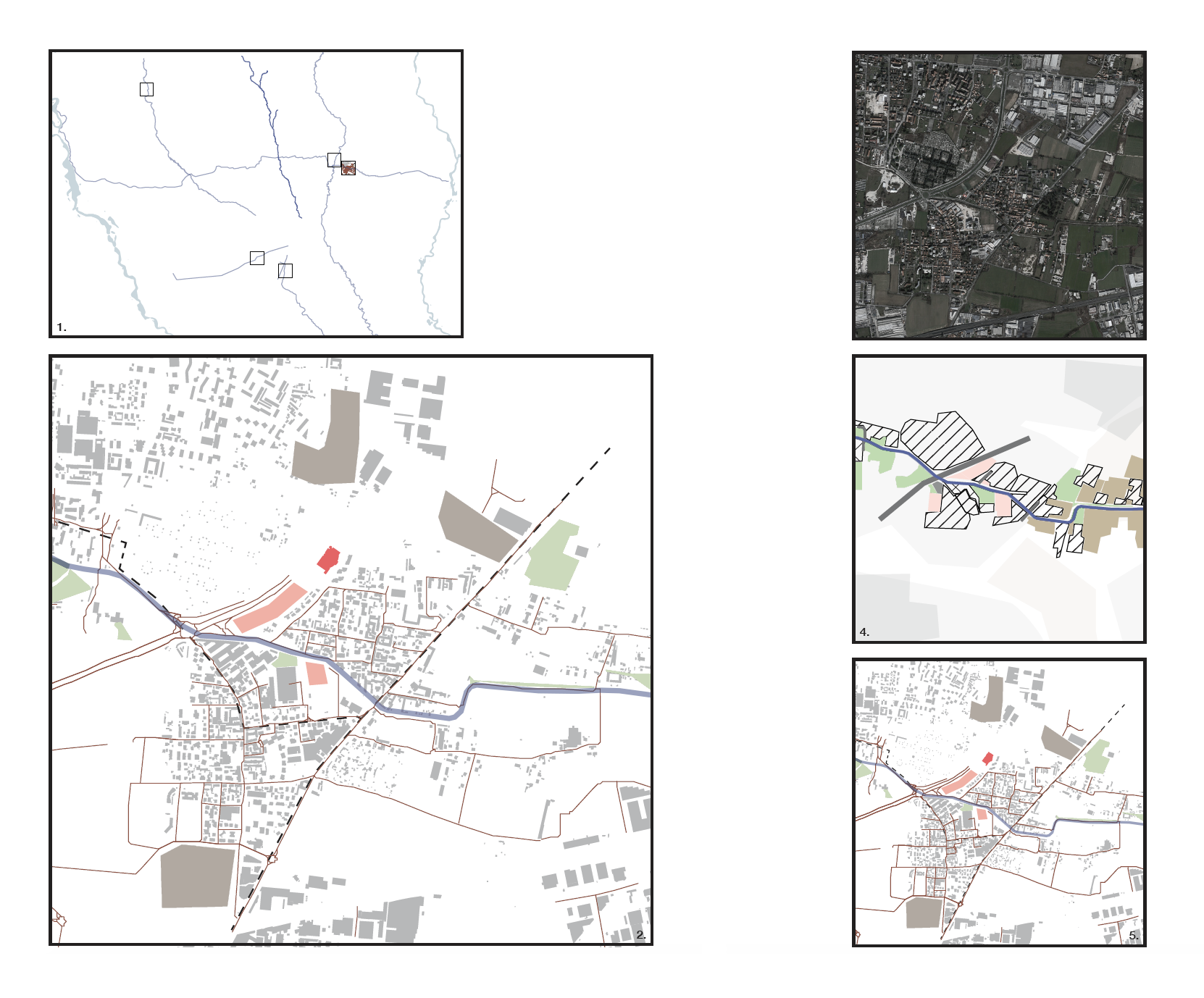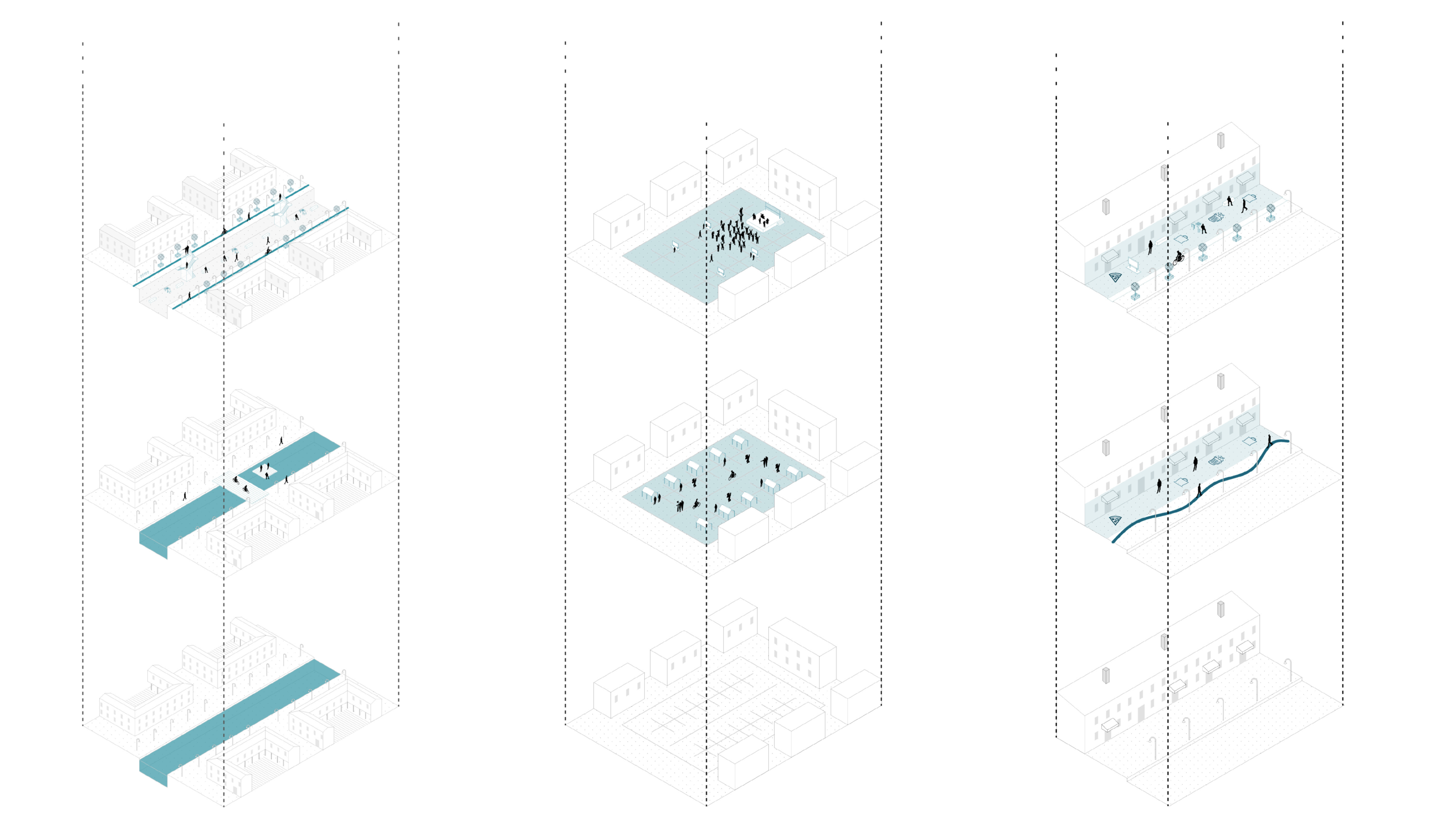Meeting on the Water
A town planning proposal containing a toolbox of flexible, soft interventions to activate the waterways of Milan, Italy.
Town Planning Design Studio - Group 5 - Politecnico di Milano - 2016
During this time of political and economic uncertainty, a time that considers what is transitory rather than permanent, the immediate rather than long term, and regards utility as priority over any other value, a new approach must be defined to strengthen and renew the image of the city. A ‘soft’, non-permanent, flexible intervention that is able to adapt to a multitude of functions, must take place. The waterways (Olona, Seveso, Lambro, Canale Villoresi, Naviglio Grande), located in – and just beyond – the Provence of Milan boundary, provide the context for our proposal. Reactivating and upgrading the space along these waterways – that today are often underused or all together rejected – using ‘soft’, flexible interventions will not only create playful, inclusive urban spaces for its ever-evolving citizens, but it will create a strengthened collective realm for the unexpected needs of tomorrow. These interventions have a double objective: on one hand, to tackle the lack of public life that characterizes many areas along the waterways of Milan, and, at the same time, address the presence of abandoned spaces - that are sometimes the two sides of the same coin - but on the other hand try to create space for bottom-up initiatives; in fact, all the actions in the toolbox are likely to be born from the public, trying to meet the needs of the people in their jobs or in their spare time.
Above all, the tools that aim to provide coherence to the entire structure are the soft connections that are integrated with the existing ones (such as cycling and riverside paths), creating a unique system of collective spaces and activities, to be perceived as a centrality by the citizens. The materials that we will use to develop our initiative consist of four types of spaces: existing collective spaces, vacant sites, abandoned farms, green oddments/buffer zones, and in between spaces. These materials were chosen because they are areas where public life is already present, or because they are spaces that are abandoned/not considered. Once these spaces are available, it is possible to start-up one or more of the activities proposed in the toolbox, making sure that they are framed in the soft connection system. All the activities are conceived to be quick, low-cost interventions, so that anyone who is interested could start them at any time. It would also be easy to remove – or relocate — if, for some reason, they are not successful or not useful for the public in a specific site; this way no hard and permanent signs will be left behind.
The following initiative is intended to be a simple and accessible way to create a connected, collective water-related environment in Milan, while demonstrating that sometimes the best interventions are soft.
Milano Città d'Acqua
Thanks to its proximity to the Alps and low lying topography, Milan is known as the city of water ( Milano citta d’acqua). The city sits within a valley and is a reservoir for the mountains to the north.
The following mapping illustrates the types of water ways, flooding potential, and water pollution found within the territory of Milan.



Interpretive Reading
We set out to have a deeper understanding of the waterways within the context of the city. By mapping the surrounding built and un-built spaces adjacent to the canals and rivers and categorizing them based on their social function, we could better understood the relationship - or lack of relationship - between the city and the waterways.
Map 1 identifies different kinds of existing places along the waterways. The spaces
include open-air collective such as parks and playgrounds, build urban fabric, roads, highways, railway, agriculture, industrial, and green oddments/buffer zones.
Map 2 dives deeper by identifying the collective life and empty spaces along the waterways. The spaces include existing collective - open air and enclosed - existing cycling paths, in-between spaces, vacant farmland, and fields.




Strategy
The following strategy is a toolbox to propose flexible, inclusive urban spaces and strengthen the collective realm. The toolbox provides a guide to connect various actors with vacancy spaces along the waterways to reimagine these spaces with new interventions.
The interventions are paired with actors who would most likely participate in organizing of that specific intervention. The waterway vacancies are also defined in an abacus of spaces.












